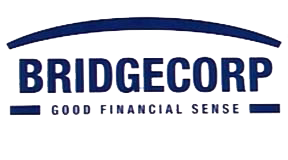
Dame Jennifer Mary Shipley is a New Zealand former politician who served as the 36th prime minister of New Zealand from 1997 to 1999. She was the first female prime minister of New Zealand, and the first woman to have led the National Party.
Dick Smith Electronics Holdings Limited was an Australian chain of retail stores that sold consumer electronics goods, hobbyist electronic components, and electronic project kits. The chain expanded successfully into New Zealand and unsuccessfully into several other countries. The company was founded in Sydney in 1968 by Dick Smith and owned by him and his wife until they sold 60% to Woolworths in 1980, and the remaining 40% two years later.
The New Zealand Press Association (NZPA) was a news agency that existed from 1879 to 2011 and provided national and international news to the media of New Zealand. The largest news agency in the country, it was founded as the United Press Association in 1879, and became the New Zealand Press Association in 1942. Following Fairfax New Zealand's withdrawal from NZPA in April 2011, NZPA told staff that it would be wound up over the next four to six months, and ceased operation on 31 August 2011.
Solid Energy was the largest coal mining company in New Zealand and is a state owned enterprise of the New Zealand Government.
Fletcher Building Limited is one of the largest listed companies in New Zealand, with a market capitalisation of nearly NZ$4 billion. The company was split from Fletcher Challenge in 2001, formerly New Zealand's largest business and multinational.
As a legal concept, administration is a procedure under the insolvency laws of a number of common law jurisdictions, similar to bankruptcy in the United States. It functions as a rescue mechanism for insolvent entities and allows them to carry on running their business. The process – in the United Kingdom colloquially called being "under administration" – is an alternative to liquidation or may be a precursor to it. Administration is commenced by an administration order.

Kamo Wildlife Sanctuary is a privately owned zoo located near Kamo, Whangarei, New Zealand. The facility houses a collection of two species of large cats and was formerly used as a location for the filming of the television series The Lion Man.
The Pike River Mine is a coal mine formerly operated by Pike River Coal 46 km (29 mi) north-northeast of Greymouth in the West Coast Region of New Zealand's South Island. It is the site of the Pike River Mine disaster that occurred on 19 November 2010, leading to the deaths of 29 men whose remains have not been recovered. The mine and its assets are owned by the Department of Conservation, whom, on 1 July 2022, assumed ownership and management following the dissolution of the Pike River Recovery Agency. The former mine site and its surrounding land are a part of Paparoa National Park.

Pike River Coal Ltd was a mining company listed on the New Zealand and Australian stock exchanges. Its primary operation was the Pike River Mine, the site of a mining disaster with 29 deaths on 19 November 2010.
The Securities Commission was an independent Crown entity of the government of New Zealand and the main regulator of investments. It was replaced on 1 May 2011 by the Financial Markets Authority.
The Ngakawau Restoration Project is a proposed hydro scheme planned to divert acid mine drainage from coal mines to an ocean outfall to restore water quality of the Ngākawau River, in the northern section of the West Coast of the South Island of New Zealand. The project is a configuration of the Stockton Plateau Hydro Scheme being developed by Hydro Developments (2013) Limited. Project information can be found at https://hydrodevelopments.co.nz

Bridgecorp Holdings Ltd is a former high-risk property development group that was operating in New Zealand and Australia. It was placed in receivership in July 2007.

The leaky homes crisis is an ongoing construction and legal crisis in New Zealand concerning timber-framed homes built from 1988 to 2004 that were not fully weather-tight. The problems often include the decay of timber framing which, in extreme cases, have made buildings structurally unsound. Some buildings have become unhealthy to live in due to moulds and spores developing within the damp timber framing. The repairs and replacement costs that may have been avoided were estimated in 2009 to be approximately NZ$11.3 billion.
CraFarms is a group of companies of which Allan, Beth and Frank Crafar were Directors. Crafar Farms was New Zealand's largest family-owned dairy business. The family business owned 22 dry stock and dairy farms with approximately 20,000 cows in various regions of the North Island, and was put into receivership in October 2009. Crafar Farms was involved in multiple prosecutions for pollution offences and incidents of poor animal welfare from 2007 to 2011.

Allan James Hubbard was a businessman who lived in Timaru in the South Island of New Zealand, and was the founder of South Canterbury Finance, New Zealand's largest locally owned finance company. In 2006, the New Zealand Listener described Hubbard as the most powerful businessman in the South Island.
The Pike River Mine disaster was a coal mining accident that began on 19 November 2010 in the Pike River Mine, 46 km (29 mi) northeast of Greymouth, in the West Coast region of New Zealand's South Island following a methane explosion at approximately 3:44 pm. The accident resulted in the deaths of 29 miners.
Mark Stephen Hotchin is a New Zealand former property developer and financier. He was a director of the failed Hanover Group which owned a number of finance companies including Hanover Finance, United Finance, Nationwide Finance and FAI Finance.
South Canterbury Finance was New Zealand's largest locally owned finance company when it collapsed in August 2010, triggering a $1.6 billion bail-out of investors deposits by the New Zealand Government; almost $1b was recovered by receivers.

Between May 2006 and the end of 2012 there were sixty-seven finance company collapses in New Zealand; including companies entering into liquidation, receivership or moratoria. An inquiry by the New Zealand Parliament estimated losses at over $3 billion that affected between 150,000 and 200,000 depositors. The most high-profile collapses were South Canterbury Finance, Hanover Finance and Bridgecorp Holdings. The collapse radically reduced the size and importance of the non-bank finance sector in New Zealand. According to the Reserve Bank, at the height of financial expansion prior to the 2007 crisis, non-bank lenders had assets of about $25 billion and made up 8 percent of lending by financial institutions. By late 2013 the size of the finance sector was half its previous size and accounted for only 3 percent of institutional lending. In the years following the beginning of the collapses, sweeping legislative and regulatory changes were made, aimed at improving oversight and regulation of the finance industry.
Mainline Corporation Ltd ("Mainline") was one of Australia's largest construction companies during the late 1960s and early 1970s. Mainline Corporation was responsible for building some of Australia's most notable landmark buildings before its collapse in 1974. The company at its height was involved in large-scale and high-rise property development and construction in Australia, New Zealand, Fiji and the United States of America. Mainline also operated a hotel chain in Australia, New Zealand and United States of American under the brand name Noah's which notably built and operated the Noah's Lakeside Hotel in Canberra, Australia as its flagship business.








